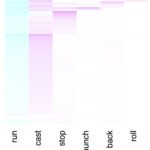Link to Pubmed [PMID] – 23219724
Curr. Biol. 2012 Dec;22(24):2375-82
Chemokines are essential in many cell migration processes, including the recruitment of leukocytes to sites of infection. In the latter context, chemokines promote leukocyte extravasation into the relevant tissue through a well-studied cascade of events. It is widely believed that chemokines further guide leukocytes within tissues via chemotaxis, the directed migration along gradients of soluble ligands. However, the basic mechanism of chemokine action within tissues has yet to be formally addressed in vivo. We identified a chemokine (zCxcl8) that recruits zebrafish neutrophils to infection loci and analyzed its function directly within interstitial tissues of living larvae. Using noninvasive imaging and a controlled cellular source of zCxcl8, we found that zCxcl8 guides neutrophils in a 2-fold manner: by biasing cell speed according to direction (orthotaxis) and by restricting cell motility near the source. We further show that zCxcl8 establishes tissue-bound gradients in vivo by binding to heparan sulfate proteoglycans (HSPGs). Inhibition of this interaction compromised both directional guidance and restriction of neutrophil motility. Thus, by interacting with extracellular HSPGs, chemokines establish robust surface-bound (haptotactic) gradients that mediate both recruitment and retention of leukocytes at sites of infection.



